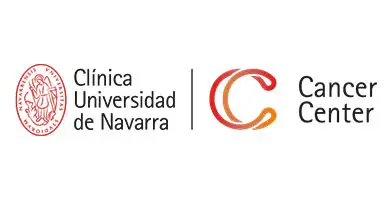Proton therapy for gastrointestinal tumours
The most precise external radiotherapy for digestive tumours that are difficult to access.
Proton therapy for gastrointestinal tumours is indicated with the purpose of preserving critical tissues and organs, such as the kidneys, the small intestine, the colon, the liver, the bile duct or the stomach, from radio-induced impact.
Many of these tumours are found in areas that are difficult to operate on and/or close to these organs, which limits the dose of radiation that would be administered with other advanced photon radiotherapy equipment.
Proton therapy allows the adjustment of the radiation to the area of tumour lesion and minimises the damage to healthy tissue, even in those tumours that have a complex anatomical location.
The Clínica Universidad de Navarra is an international reference centre in the field of digestive tumours diagnosis and treatment and boasts one of the teams of professionals with renowned prestige in the area of hepato-pancreatic-biliary surgery.
Do you need us to help you?
Complete this form and our specialists will contact you to discuss the case.
Indications for proton therapy for gastrointestinal tumours
- Anal cancer.
- Esophageal-gastric cancer.
- Liver cancer - primary and metastatic.
- Pancreatic cancer.
- Recurrent rectal cancer.
- Cholangiocarcinoma or bile duct cancer.
- Recurrent gastric cancer.
- Recurrent colon cancer.
Main advantages of proton therapy in digestive tumours
As a highly complex medical centre, we have the latest technology for the most accurate diagnosis and treatment of gastrointestinal tumours in the shortest time span.
Less toxicity
It produces fewer adverse effects than any other advanced modalities of radiotherapy, especially abdominal pain, nausea, fatigue, vomiting and diarrhoea.
Greater accuracy
A high-energy beam with great precision that allows for treatment tumors that are difficult to access, minimizing the unnecessary radio-induced damage to the surrounding healthy tissue.
Greater control
It protects vital organs and tissues situated close to the irradiated area, such as kidneys, liver, small intestine and stomach.
The technology of the Clinic
- Multi energy system: It changes the energy very quickly for the sweeping of the next treatment layer.
- 360º gantry rotation: The 360º rotation of the gantry on the Clinic's synchrotron reduces treatment time and increases the precision of the beam. This is a decisive feature in some areas, such as liver tumours, where the tumour is subject to the natural movement of the organ.
- Pencil beam scanning: This is the most advanced version of proton therapy administration, with a great capacity to enclose the tumour in a half circle, adjusting the programmed dose and reducing the damage to healthy tissue and therefore the risk for the surrounding vital organs, such as the kidneys.
- Cone-beam tomography: in a 360º gantry, the integrated CT allows the exact verification of the condition of the tumour on the very day of the treatment.
Why at the Clínica Universidad de Navarra
Most gastrointestinal tumors require a combination of therapies consisting of surgery, chemotherapy, and radiotherapy (in different modalities, including intraoperative radiotherapy), accessible at the Cancer Center Clínica Universidad de Navarra.

Reference Center
The Clínica Universidad de Navarra is an international reference center in the diagnosis and treatment of cancer, and has one of the best hepatopancreaticobiliary surgery teams in the world.

A unique concept
First facility in Spain integrated in an Intrahospital Cancer Center, with all its assistance, academic and research support.

Advanced technology
As a highly complex center, we have the most advanced technology for the most accurate diagnosis in the shortest possible time.

